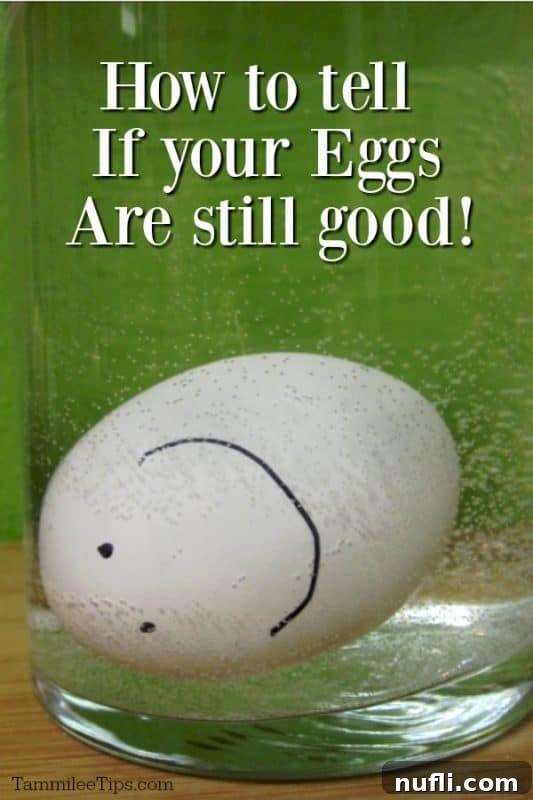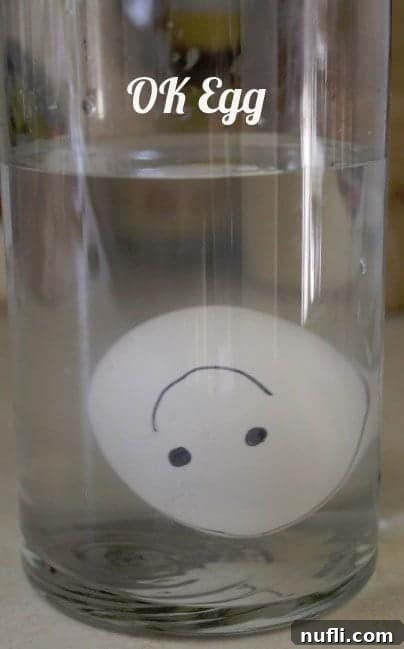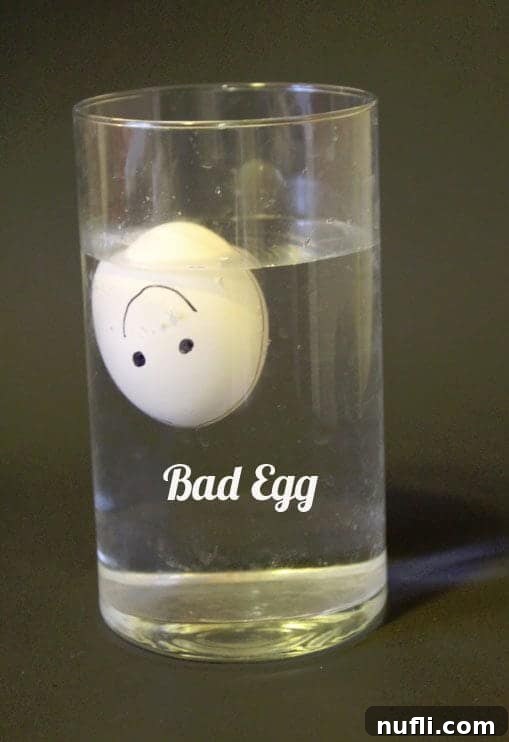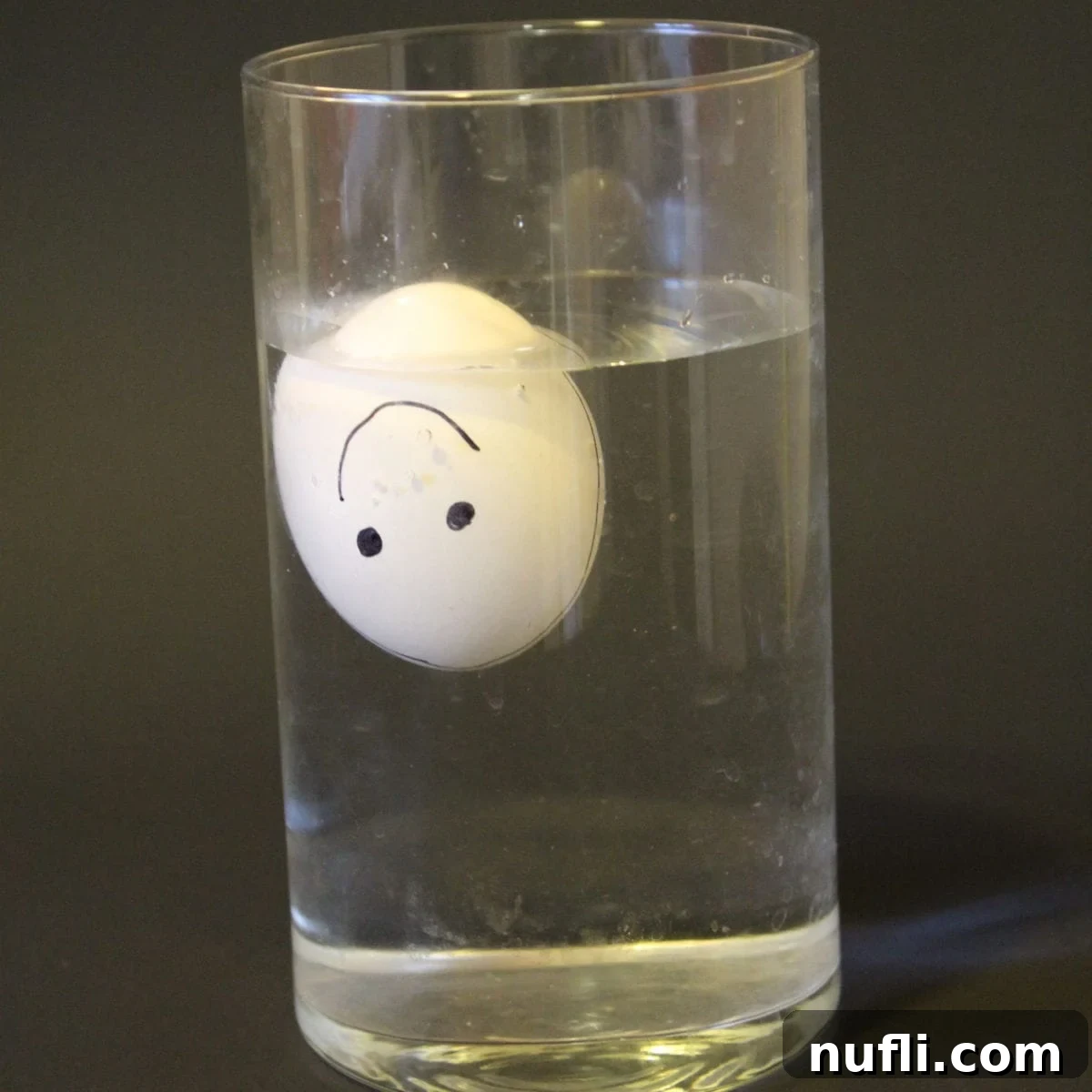Few kitchen dilemmas are as common, or as frustrating, as staring at a carton of eggs past its printed date and wondering: Are these still good? We’ve all been there, hesitant to use them for fear of foodborne illness, yet equally reluctant to toss perfectly good food (and money!) into the bin. The good news is, you don’t have to guess or rely solely on those often-misleading dates. There are simple, reliable ways to determine egg freshness right in your own kitchen.
Eggs are a staple in most households, forming the base of countless breakfast dishes, baked goods, and main courses. Given their versatility and nutritional value, it’s a shame to waste them. I know I’ve personally thrown out countless eggs that were likely perfectly fine, simply because the “sell-by” date had passed. This guide aims to equip you with the knowledge to confidently assess egg freshness, helping you reduce food waste, save money, and ensure food safety for yourself and your loved ones.
While the methods we’ll discuss are highly effective, remember this golden rule of food safety: if you ever have a strong doubt or a truly unsettling feeling about an egg, it’s always best to err on the side of caution and discard it. Your health and peace of mind are paramount. This guide is designed to empower you with information, not to encourage risk. Let’s dive into the most popular and effective method for checking egg freshness: the float test.

The Ultimate Guide to Egg Freshness: Mastering the Float Test and More
The float test is by far the most widely recognized and easiest method for determining the freshness of an egg. It’s based on a simple scientific principle: as an egg ages, its porous shell allows air to slowly seep in, causing the small air cell inside the egg to expand. A larger air cell means the egg will be more buoyant and float higher in water.
Understanding the Science Behind the Float Test
To truly appreciate the float test, it helps to understand a little about egg anatomy. An egg’s shell, while appearing solid, is actually porous, containing thousands of tiny pores. These pores allow for gas exchange, which is vital for a developing chick (or for the egg to “breathe” after being laid). Fresh eggs have a very small air cell, usually located at the wide end of the egg, between the two shell membranes. Over time, moisture evaporates through the shell, and air enters to fill the void, causing this air cell to grow. The larger the air cell, the more buoyant the egg becomes.
Performing the Egg Float Test: Step-by-Step
This test requires nothing more than a bowl, some water, and your eggs. Here’s how to do it:
Step 1: Gather Your Supplies. You’ll need a bowl deep enough to fully submerge an egg, and enough cold water to fill it. Gently place the egg in the bowl or pan with enough water to completely cover it. It’s best to test eggs one at a time to clearly observe the results without any interference.

Step 2: Observe the Egg’s Behavior. Once submerged, watch how the egg settles in the water. This is where you’ll get your answer:
Outcome 1: The Sinker (Very Fresh Egg)
If the egg immediately sinks to the bottom of the bowl and lies completely on its side, congratulations! You have a very fresh egg. This indicates a minimal air cell and maximum density, meaning it was likely laid very recently. These eggs are perfect for any culinary application, especially poaching or frying, where a firm yolk and thick albumen are desired.

Outcome 2: The Tilter (Still Good, Use Soon)
If the egg sinks but stands upright or bobs slightly on the bottom, perhaps with the pointed end down and the wider end (where the air cell is) pointing upwards, it’s not quite as fresh as a full sinker, but it is still perfectly safe and good to eat. This egg has a slightly larger air cell. These eggs are ideal for hard-boiling, as the slightly larger air pocket makes them easier to peel. Plan to use these eggs relatively quickly, within a few days to a week, for optimal quality.

Outcome 3: The Floater (Discard Immediately)
If the egg floats completely on the surface of the water, it’s a clear sign that it has accumulated a significant amount of air, indicating that it is old and likely spoiled. Discard this egg immediately. While a floating egg doesn’t always definitively mean it’s rotten (it could just be very old), the risk of spoilage and potential bacterial growth is high, making it unsafe to consume. Never take chances with a floating egg.
Here is a helpful visual reference guide for how to interpret the results of the float test and tell if an egg is fresh:

Beyond the Float Test: Other Indicators of Egg Freshness
While the float test is excellent, it’s not the only way to gauge an egg’s quality. Combining it with other sensory checks can provide even more certainty:
- The Smell Test (Most Important for Spoiled Eggs): This is arguably the most crucial test for detecting a truly bad egg. If an egg smells sulfurous, rotten, or just generally “off” when you crack it open, it’s definitely spoiled and should be discarded, regardless of what the float test suggested. A fresh egg should have little to no odor.
- The Visual Test (After Cracking): Crack the egg onto a flat plate.
- Yolk: A fresh egg will have a firm, round, high-standing yolk. As an egg ages, the yolk flattens out.
- Albumen (Egg White): Fresh eggs have two distinct layers of albumen: a thick, gelatinous inner layer that holds close to the yolk, and a thinner, more watery outer layer. As the egg ages, the thick albumen thins out and becomes more watery.
- Color and Clarity: The white should be clear or slightly cloudy (which actually indicates extreme freshness, as dissolved carbon dioxide escapes over time, making it clearer). Any discoloration (pink, green, or iridescent hues) or unusual spots other than typical harmless blood spots, are signs of bacterial contamination.
- The Sound Test (Less Reliable): Hold the egg up to your ear and shake it gently. In a very fresh egg, you shouldn’t hear anything. If you hear the contents sloshing around, it indicates the egg has a larger air cell and a more watery albumen, suggesting it’s older. While not a definitive sign of spoilage, it suggests it’s best for scrambling or baking rather than poaching.
Decoding Egg Dates: Sell-By vs. Use-By
The dates stamped on egg cartons can be confusing. The “sell-by” date is a guideline for retailers, indicating how long the store should display the eggs for sale. It’s not an expiration date. Eggs are typically good for 3-5 weeks *after* the sell-by date if properly refrigerated. A “use-by” or “best-by” date is a recommendation for peak quality. Neither date means the egg is automatically unsafe after that day. Always rely on the float test and your senses.
Optimal Egg Storage for Maximum Freshness
Proper storage is key to extending the life of your eggs. Always store eggs in their original carton on an inner shelf of your refrigerator, not in the door. The carton protects them from absorbing odors from other foods and helps maintain a consistent temperature. The refrigerator door is subject to frequent temperature fluctuations, which can shorten an egg’s shelf life. Kept at a consistent 40°F (4°C) or below, eggs can remain fresh and safe for several weeks beyond their sell-by date.
Making Food Safety Fun: A Project for All Ages
The egg float test is not just a practical skill; it’s a fantastic educational activity to do with kids! It’s a simple science experiment that visually demonstrates a concept, teaches about food safety, and introduces them to the importance of not wasting food. Plus, adding a fun element like drawing smiley faces on the eggs after the test makes it even more engaging. It’s an easy way for them to learn early about how to tell if an egg is fresh and safe to eat, fostering good habits from a young age.
By understanding these simple tests and storage tips, you can confidently use your eggs, reduce waste, and ensure every meal is both delicious and safe. Now that you’re an expert in egg freshness, why not put those perfectly good eggs to use?
Great Egg Recipes to Enjoy Your Fresh Catch!
Fresh eggs are incredibly versatile and can elevate almost any dish. Whether you prefer them savory or sweet, there’s an egg recipe for every occasion. Here are some of our favorite ways to enjoy fresh eggs:
Scotch Egg Recipe – A delicious, hearty classic!
Spicy Deviled Eggs – A crowd-pleasing appetizer with a kick.
Crockpot Hard-Boiled Eggs – The easiest way to get perfectly peeled hard-boiled eggs every time.
Crockpot Bacon Egg Casserole – Perfect for feeding a crowd with minimal effort.
Crockpot Greek Frittata – A flavorful and healthy meal any time of day.
Do you love discovering new recipes? Be sure to check out our extensive collection of copycat recipes, indulge in our delightful dessert recipes, and explore the convenience of our amazing CrockPot Recipes. There’s always something new and delicious to try!
Stay connected and never miss out on our latest culinary inspirations! Follow Tammilee Tips on MSN, Facebook, Instagram, and Pinterest, for all of our exciting recipe posts, kitchen tips, and more.
First shared January 8, 2013, updated March 16, 20202
